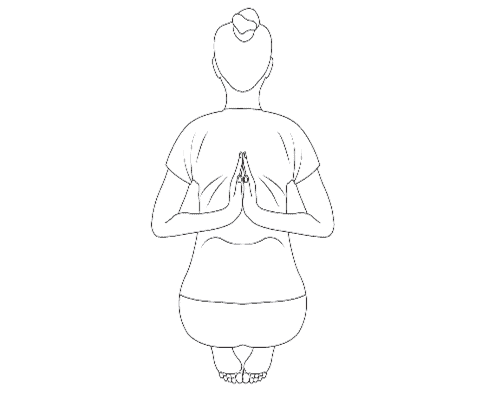
3 Good Reasons to Take Up Yoga After 60
For a long time, I’ve wondered why yoga teachers (even in their 80s or 90s) are so youthful and full of vigor and joy. Is it due to particular yoga poses, lifestyle, or something else?
I put this question, as inspiration for my new book, to 14 yoga teachers, all women, the youngest aged 66 and oldest 95.
The good news is that the beneficial practices they shared are available for everyone, not just yoga teachers.
Keep the Body Moving
The women all believe that many physical ailments of aging are simply due to lack of movement. While this might sound whimsical, studies prove that increased physical activity in older adults is associated with better health, less illness and higher levels of mental wellbeing and quality of life.
And this is where yoga can help. The smorgasbord of poses as well as stretching keep the joints mobile and body supple. Or as Vivian (aged 95) told me, “it’s ‘a case of use it or lose it’.”
I was amazed, when attending these teachers’ classes, at how easily they move from sitting (on the floor) to standing. The importance of maintaining this age-related ability is clear. For adults (aged 51–80) a reduction in floor to standing ability is associated with increased dependency and earlier death.
Again, yoga can assist with a range of poses that involve moving from floor to standing and vice versa. Depending on your physical limitations, it’s also possible to start by practicing in a chair (a form of yoga called chair yoga) and rising up and down.
Tania (aged 93) shared some instructions for Reverse Prayer Pose, her favorite posture. She recommends it for preventing kyphosis an age-related abnormal outward curvature of the spine.

She explains it like this:
Start by relaxing into the shoulders:
Then take your hands behind your back, fingers facing down to start, and press the fingertips together.
Then turn the hands upwards, and try to bring the palms together so that the little fingers press into the upper back.
This pose also keeps Tania’s wrists in tip-top condition, a necessity for playing her violin. Tania likens the body to a musical instrument – “you need to play it to keep it in good health.”
Take Time to Relax and Rejuvenate the Body and Mind
The teachers said they relish seeing their students leaving after class looking younger and more relaxed than when they arrived. Here the special ingredients are yogic breathing and relaxation practices that calm, refresh and revitalize the body.
Rest assured there are scientific reasons backing these claims. Let me explain. Whenever we face an actual (or perceived) fearful situation, the sympathetic nervous system is aroused. Straightaway, the body is pumped full of stress hormones causing flight, fight or freeze responses.
In fast-paced modern life, and especially during this time of Covid, our sympathetic nervous system is easily and often triggered. If this response becomes habitual, we become frazzled and feel worn out.
Studies show that yoga breathing (diaphragmatic breathing) and relaxation practices rebalance the body through switching on the calming parasympathetic nervous system. This bolsters serotonin and melatonin, wonderful hormones that do indeed make us feel and look happier and more relaxed.
Just as the women advise, yoga is a wonderful tool to nurture the body, allowing time to rest, rejuvenate and remedy the stresses of modern life.
Maintain Positive Social Connections
Another benefit the women mentioned is that yoga creates a social community for students and teachers through facilitating positive connections (friendships) and a sense of communal belonging.
One of the teachers conducted a small survey asking her students what they liked best about classes. While she thought they might mention aspects of her teaching, the overwhelming response was about the social aspect.
The students loved catching up with each other and meeting for coffee after class. Even with classes online during Covid restrictions – and when loneliness may be common – this provides important social contact.
So, yoga facilitates community and positive social connections and emotions that are essential to health and wellbeing and happiness. The connection with others through yoga is a precious gift for students and teachers alike.
Are you already a fan of yoga? Or perhaps you’re put off trying yoga by glossy images of yogis performing advanced poses? Did you know there are many different styles and levels of yoga to choose from – not only ‘hot yoga’? Where have you looked to find the right teacher? Maybe you’re wondering how yoga is different from a gym or fitness work out? Please join the conversation and share your experiences.
Tags Yoga for Seniors






